Pinterest Marketing: A Small Business Guide
Pinterest is a powerful platform for businesses to drive traffic and engagement. With over 400 million active users each month, it is a goldmine for small businesses looking to increase their online presence and reach a wider audience. In this guide, we will explore the key tactics and strategies that can help you make the most of Pinterest marketing.
1. Create a Business Account
To start, it’s crucial to set up a business account on Pinterest. This will give you access to valuable features such as Pinterest Analytics, which allows you to track your performance and gain insights into your audience. Additionally, a business account enables you to add rich pins to your content, making them more informative and engaging.
2. Optimize Your Profile
When it comes to Pinterest marketing, your profile plays a vital role. Make sure to choose a clear and recognizable profile picture that represents your brand. Use keywords in your bio and board descriptions to optimize your visibility in search results. Remember, the more specific and relevant your keywords are, the better chance you have of attracting your target audience.
3. Create Inspiring and Shareable Content
Pinterest is all about visuals, so it’s important to create eye-catching and high-quality images. Invest in professional photography or use tools like Canva to create aesthetically pleasing graphics that resonate with your target audience. Make sure to include a compelling description with each pin, using relevant keywords to increase its discoverability.
4. Organize Your Boards
Organizing your boards is essential for a seamless user experience. Group related pins together, and use descriptive titles and board descriptions to help users find what they’re looking for. Additionally, consider creating secret boards for brainstorming or planning future content.
5. Engage with the Pinterest Community
Pinterest is a social platform, so engaging with your audience is key. Follow relevant accounts, interact with their content, and respond to comments and messages in a timely manner. Participating in group boards and collaborating with other businesses can also help increase your reach and exposure.
6. Promote Your Pins
To amplify your reach and drive traffic, consider promoting your pins through Pinterest Ads. This paid advertising option allows you to target specific demographics, interests, and behaviors, ensuring that your pins reach the right people. Set a budget that aligns with your marketing goals and monitor your campaigns closely to optimize performance.
7. Analyze and Refine Your Strategy
Regularly monitoring your Pinterest Analytics is crucial to understanding what works and what doesn’t. Pay attention to metrics like impressions, engagement, and click-through rates to gauge the effectiveness of your pins and boards. Use this data to refine your strategy and make informed decisions about your future content.
In conclusion, Pinterest marketing has immense potential for small businesses. By following these tactics and strategies, you can leverage the platform to increase brand awareness, drive website traffic, and ultimately grow your business. So, don’t miss out on the opportunities that Pinterest has to offer and start optimizing your presence on the platform today.
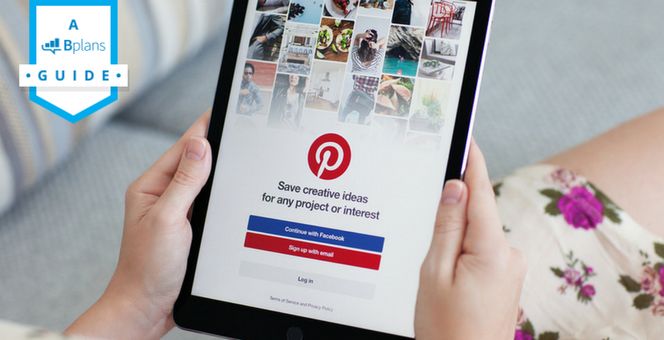
Sure, Pinterest is a visual treasure trove of wedding, baking, and fashion. But don’t write it off if your business doesn’t fall into those categories.
Even if your brand lacks a Pinterest-friendly visual product, you can still develop a content strategy to leverage the platform.
Know your audience—and Pinterest’s user base. Before creating a Pinterest strategy, compare your existing or potential audience with Pinterest users.
Pinterest is most commonly used by women ages 19 to 29, who have graduated college and make over $75,000 annually.
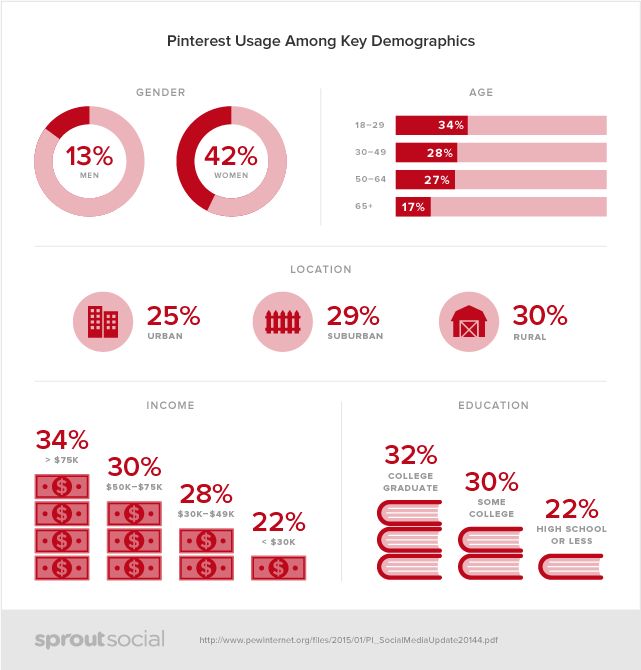
Take a look at your customer demographic information; if you don’t know your customer base, do market research before proceeding.
If there isn’t much overlap between your customer base (or the customers you’re hoping to attract) and Pinterest’s main demographic, this doesn’t mean you should neglect Pinterest. Keep this in mind as you develop a content strategy, and you may not find as much success on Pinterest as on other platforms.
Set up a Pinterest business account.
Now that you’ve compared your customer demographics with Pinterest’s primary user base, set up your business’s Pinterest account.
Setting up a Pinterest account is straightforward, but make sure you link it to your business’s website. Pinterest for Business walks you through the process here.
Create Pinterest boards.
Once you’ve created your account, set up Pinterest boards.
The types of boards you create will vary based on your business. However, try to create a variety of boards that reflect your company culture, product or service, industry, and topics of interest to your ideal client.
For a creative example of boards, check out L.L.Bean’s Pinterest page.
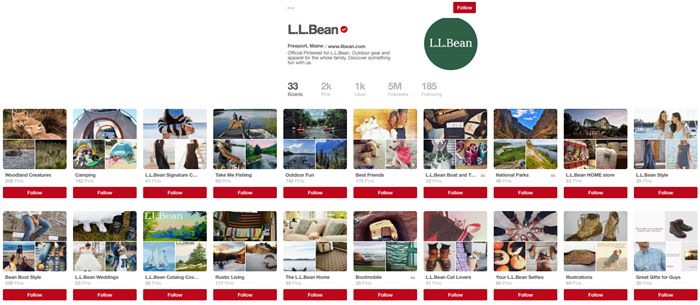
The outdoor-focused brand showcases their culture and values with boards dedicated to outdoor activities, pets, National Parks, and more. It’s authentic, varied, and reflects the brand.
You don’t need to create as many boards as L.L.Bean (which has over 30!), but having a variety of Pinterest boards is key to establishing a multifaceted presence that captures your brand’s essence.
Make your website Pinterest-friendly by keeping two things in mind: make it easy for people to pin your content, and ensure your content is worth pinning.
To enable visitors to pin directly from your website, add Pinterest buttons. The "save" button allows pinning without leaving your site. It’s worth adding as you ideally want your content to be shared by others on Pinterest, not just by yourself.
Pinterest provides a guide on adding a save button in their Pinterest for Business guide. The Pinterest Widgets page offers additional buttons, such as follow buttons and embedded boards.
Create Pinterest-worthy content by optimizing your website and ensuring your content is suitable for the platform.
Pinterest mainly focuses on visual content, so if you want your content to be pinned and repinned, it should have a visual appeal.
If you have visually appealing products, there are resources available on how to take great photos for Pinterest.
If your product or service isn’t highly visual, you can still make your website content appealing and Pinterest-worthy. Infographics and graphic lists are popular on Pinterest and can be easily created with programs like Canva. Look to your customers for inspiration and curate content that aligns with your brand image, company culture, community, and other aspects of your brand identity.
For inspiration, check out General Electric.
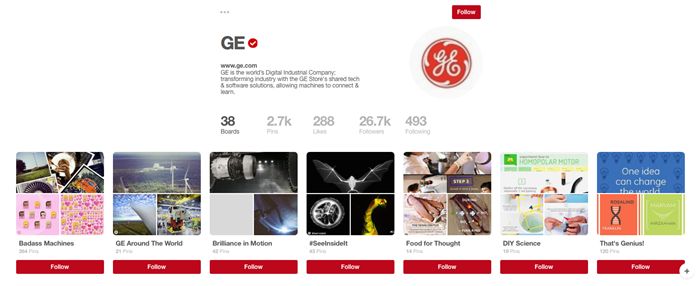
GE has successfully created visually appealing content on Pinterest, despite not appearing to be a brand that would excel in this area. Check out their “That’s Genius!” page, dedicated to the wisdom of GE founder, Thomas Edison, and other revolutionaries.
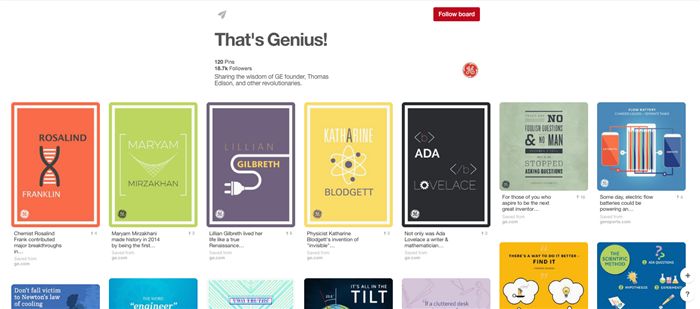
If you’re a B2B company or lack visually appealing product, you don’t need to avoid creating great visuals. Just get more creative.
Size your images correctly. The basic rule is an aspect ratio of 2:32. Canva has a template for Pinterest.
Repin other content to your boards. Pinterest’s beauty comes from curation. Curate content from other sources to add richness to your boards and position yourself as an influencer.
Enable rich pins. Rich pins display your website name and icon beneath the pin. Enable rich pins through this guide from Pinterest.
Consider promoted pins. Promoted pins reach a wider audience, but it will cost you. Learn how to create a promoted pin campaign from Social Media Examiner.
Tell your customers about your Pinterest page. Use physical signs, cards, or your website to lead customers to your Pinterest page. Utilize email marketing as well.
Keep track of key metrics. Establish and track indicators of success using Pinterest analytics or third-party tracking tools.
Creating a Pinterest marketing strategy is about thinking creatively and tapping into what makes your brand unique, memorable, and valuable to customers.
Have a question or strategy to add? Share this article and let us know. Follow on Pinterest.
Hello!
I’m Andrew Brooks, a seasoned finance consultant from the USA and the mind behind phonenumber247.com.
My career is built on a foundation of helping individuals and businesses thrive financially in an ever-changing economic landscape. At phonenumber247.com, my aim is to demystify the complex world of finance, providing clear, actionable advice that can help you navigate your financial journey with confidence. Whether it’s personal finance management, investment strategies, or understanding the nuances of market dynamics, I’m here to share insights and tools that can propel you towards your financial goals.
Welcome to my digital space, where every piece of advice is a step closer to financial clarity and success!
